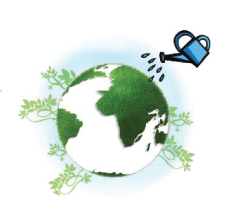We are living in a global food catastrophe that will be more crippling than anything the world has ever seen. The credit crunch and the reverberations of soaring oil prices around the world will pale in comparison to what is about to transpire. The greatest demand challenge is not oil – it has yet to come.
“Those who have food are going to have a big edge,” is what U.S. Strategist Donald Coxe thinks it has come to. The U.S., of course, is one of those countries with an edge. 54 percent of the world’s corn is grown in America’s mid-west, as revealed by the United States Department of Agriculture’s Economic Research survey.
Countries are facing devastating food shortages which could ultimately lead to a war for control over the world’s food market. Due to food shortages and escalation in world prices, the poverty trap has become even stronger. This means that the millennium development goals (MDGs) and the eradication of poverty increasingly seem like nearly impossible tasks. Instead of making progress, perhaps we have regressed in our journey towards the MDGs.
The situation is dismal, however there are some steps we can all take to soften the blow of food shortages.
Soften the Blow Lesson 1: Victory Gardens
During World War II, the American and Canadian governments started a programme which was called, Victory Garden. Its primary purpose was to encourage people to grow food at their homes to ease and reduce the pressure on the food supply during the course of the war. Citizens grew food on their lawns, on apartment rooftops, and wherever possible. The Victory Garden’s existence ceased when the war ended and things went back to their old (unoptimized) ways, being dependent upon supermarkets and fuel-consuming grocery stores for our food.
Now, when we are facing severe food shortages, why wouldn’t we start such a programme and encourage people to turn their manicured lawns into a means of survival?
With such dire agricultural realities, among our first steps can be to replace ornamentally manicured, water and fertilizer-sucking, perpetually out of season lawns into vegetable gardens – to not only feed families, but also teach children about self sufficiency and natural resources.
Soften the Blow Lesson 2: Urban Agriculture
During the Cold War, Cuba’s industrial-agricultural system was fueled by oil from the Soviet Union. When the Soviet Union collapsed, Cuba lost its source of oil and the system began to collapse. Food shortages were the norm. However, Cuba prevailed by taking a different approach to their farming methods.
Out of the crisis emerged an incredible success story, a classic CSR winner where dire risk was flipped into creative opportunity. More than 80 percent of the vegetables consumed in cities were also grown within them, according to the Financial Post. Yards and vacant lots were put into food production, while the state provided expertise and equipment to get new ‘farmers’ started. Today, more than ten thousand urban farms provide fresh, cheap, organic food to local neighbourhoods in Cuban cities while providing incomes and jobs to tens of thousands of people. The gardens achieve a productivity level comparable to yields from industrial agriculture. They do this by mimicking nature rather than bludgeoning it into submission with chemicals, artificial fertilizers and excessive irrigation.
There is hope that we can curb these foot shortages if we act now, as a nation, unified in our times of crises at least. We must understand the urgency and contribute towards self-sufficiency. There is a need to raise awareness and educate the masses, who can contribute to such programmes. However, ultimately, the government must play its leading role in not only resolving food shortage issues, but proactively preventing them.
We want to see our coming generations eating and surviving in this world on their own and it is our common responsibility to give them a planet not green with envy or disease but green with produce. Green: the colour of money, the colour of the environment, and now, the colour of food.






